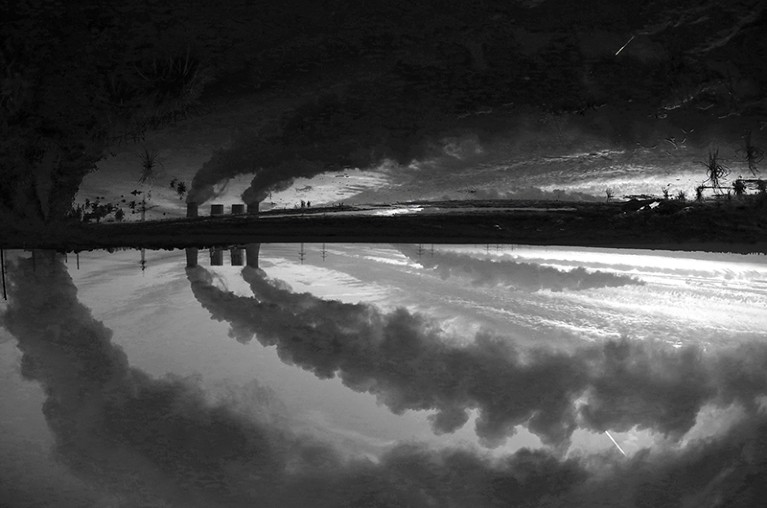
Environmental research straddles many disciplines.Credit: Ina Fassbender/Reuters
Consider the following case study — real but purposefully vague to protect authors’ confidentiality.
A manuscript is submitted to a Nature journal that combines health and environmental data and modelling to forecast health impacts of anticipated environmental changes. Three editors with different expertise consider the paper; they send it to four referees to cover the specialities involved. All see problems in the paper and it is rejected.
The authors appeal, responding to the critiques. The paper is re-refereed. Two of the referees see improvements; the other two still have concerns, especially in relation to the interpretation of health data. The cycle is repeated several times, with the paper improving at each stage. Eventually all referees are genuinely persuaded — not worn down — that the work can be published. One year after the initial submission, the paper is accepted in principle.
The lead author, an environmental scientist, admitted after publication that running this gruelling gauntlet had led him to realize that he needed to develop a deeper understanding of models used by the health-research community.
There are lessons in this for researchers, editors, funders and institutions about what it takes to avoid what one might provocatively call glib interdisciplinarity. The difficulties in such cases often stem from ‘domain inequality’: researchers from one discipline have a set of data that speak to impacts that can be understood only by a totally different sort of expertise. If they don’t work with the relevant experts, the result is hand-waving.
Related to this is the problem of terminology, when the subtleties of concepts familiar to one field simply haven’t been grasped by those from another. Sometimes, referees will call this out in the name of comprehensibility, only to find in a subsequent revision that the authors haven’t adequately understood the concept in the first place.
Too often, funders and institutions that trumpet the value of multidisciplinary research fail to support or allow for the risks involved and the time it takes to rise to these challenges — to achieve interdisciplinary domain equality and mutual depth of understanding. Forging new collaborations, and with them, new ways of communicating, can slow a researcher’s publication rate. But the efforts are to everyone’s advantage.
Note also that cases such as the one above require editors to make a succession of challenging judgement calls. They have to decide that a multidisciplinary paper has the potential to make its case, that the authors have the capacity to rise to the standards of disciplines other than their own and that some trade-off in traditional disciplinary criteria for robustness in interpretation of the evidence might be necessary to capture the broader perspective.
Editors also have to gauge how far to push back while sustaining multiple referees’ tolerance and giving authors due opportunity. They sometimes have the daunting responsibility of making the integrative call on a paper’s significance (see, for example, http://doi.org/gcmfhn). It may even be the editors’ duty, for a technically sound paper with unenthusiastic referees, to overrule all of them and publish it.
After all, interdisciplinary papers are challenging for referees, too. They may fail to recognize the significance of the whole because the component in their own field is not innovative. Valuable indeed is the referee who stands firm by the standards of their discipline yet is able to allow for some latitude when work is addressing a real-world challenge in a way that requires a synergy of knowledge. Such referees must be nurtured.
All that said, even well supported, well conducted, well reviewed and edited work can yield results that cannot be replicated by others, for reasons that are entirely unexpected (see, for example, G. J. Lithgow et al. Nature 548, 387–388; 2017). Without attention to such possibilities by deep-diving into the relevant research, researchers who swallow whole the conclusions from another discipline are asking for trouble.
The gains from interdisciplinary research are essential, especially in addressing grand challenges such as sustainability; together we must take on the tough challenge of not being glib.

 Five ways consortia can catalyse open science
Five ways consortia can catalyse open science






